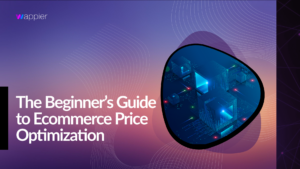Use these methods to discover if your customers are feeling the love or have a bone to pick.
Many businesses believe that if a customer isn’t complaining, they’re happy. Even worse, and just as common, is the belief that happy customers don’t need attention. Neither are true, which is why every brand should be performing some kind of customer sentiment analysis. With the right tools, you can get a sense of how your customers feel and discover pain points you may not have known existed. This article will explain how customer sentiment analysis works, as well as the tools you’ll use to do it.
Why conduct customer sentiment analysis
Customer sentiment is an umbrella term for how people feel about your business or brand — emphasis on “feel.” Unlike customer satisfaction, customer sentiment is a measurement of your customers’ emotional reactions to your business. It can be as broad as “I love Nike” or as narrow as “I hate the typeface the Sephora app uses.”
Sentiment gauges how your customers feel based on the language they use in feedback. If a customer thought your prices were “fantastic,” for example, that would be categorized as positive, whereas if the word “terrible” surfaces, that’s negative. Customer sentiment isn’t exact, as language usage varies across different regions, ages, and cultures, but it provides an actionable sense of how your customer base feels about different aspects of your business, such that you can make choices based on it.
Customer sentiment analysis can be an early warning signal that something in your operation needs to change. Your customer experience may be too convoluted, or your social media director may have posted something inappropriate on Twitter. Having good customer sentiment analysis tools in place lets you stay ahead of potential disasters that could cost you business or hurt your reputation.
It doesn’t only flag negative reactions, though; you’ll also discover everything your customers love about you, like your top-notch chatbot or intuitive UI. Customer sentiment analysis provides both long-term and real-time insight into how the public views your company, allowing you to make informed changes.
The two kinds of feedback
Customer sentiment is derived from feedback, and while there are many forms that feedback can take, they all fall into one of two categories: direct or indirect. All feedback is driven by emotion, and so is the way it’s expressed. Analyzing both direct and indirect feedback gives you a more complete perspective of your brand’s health.
Direct feedback
Customer sentiment analysis based on direct feedback overlaps with several areas of analysis as it consists of any method you have for letting consumers talk directly to you. Social media, user reviews on your website, real-time chat, and email are all ways your customers can get your immediate attention and all valuable forms of direct feedback. This is arguably the most important kind of customer sentiment you can measure because someone who feels passionately enough to reach out is telling you something you need to hear. A language analyzer like Lexalytics scans direct feedback to inform you of not only what your customers are saying, but why they’re saying it.
Indirect feedback
P.T. Barnum may have believed there was no such thing as bad publicity, but he didn’t live in the era of social media. Indirect feedback is a key component of a full customer sentiment analysis. What consumers are saying about your brand can be more important than what they’re saying to your brand. Social media users are more than happy to signal boost a stranger’s complaint about your business if it’s a juicy enough story (or even if they’re just bored that day). Positive reactions can be just as viral though, especially if a brand goes above and beyond to help out a customer, support a community, or even just be fun. A social listening platform like Mention can scan social media platforms in real-time to identify posts mentioning your brand.
Customer sentiment analysis tools
The best tool for measuring customer sentiment will depend in part on how you interact with your customers. If you don’t already have several of these tools in place, you’d be wise to get them. Information about what consumers want from you (or don’t) is a solid foundation upon which to grow your brand.
Customer satisfaction surveys
Sentiment and satisfaction are two sides of the customer experience coin. Satisfaction covers facts – how well a product performed, return policies, battery life, and so forth. The language your customers use to describe their satisfaction is typically a very good indication of their sentiment. “I’m very impressed at how solid it was” conveys both that the packaging worked as intended and that the consumer had a positive emotional reaction to it.
Online media
Social media platforms are one of the easiest ways the public can interact with your business. According to a Harvard Business Review study, positive reactions to your social media accounts won’t necessarily drive more business, but the immediacy of social media makes your fans an on-demand feedback conduit. Unfortunately, the opposite isn’t true: negative sentiments often spread like wildfire on social media, which can damage your reputation and impact your sales. Social Mention is a free tool that scans more than 100 social media platforms in real-time, revealing how people are talking about your brand. It’s a great entry-level customer sentiment analysis tool, but for more robust features, you’ll probably want something more like Talkwalker.
Net Promoter Score
NetPromoter Score (NPS) measures customer loyalty and the likelihood for customers to recommend your business to their peers. It’s a straightforward survey that asks customers to rank how likely they are to recommend your business to a friend on a scale of 1 to 10. There are plenty of tools to help you calculate your NPS score, but you’ll want to use one that gives you options for sending your surveys. SurveyMonkey, for example, has 10 different survey delivery choices, including email, SMS, and social media. NPS is a powerful metric that provides clear data about your customer experience over time.
Customer sentiment analysis tools provide a wealth of information, but it’s worth mentioning a caveat. Despite the old saw, the customer isn’t always right. Website or app redesigns will almost always spark a flurry of negative sentiment by consumers used to the old version, for example. Assuming you had sound reasons for the change, acquiescing to their sometimes quite vocal demands would be a mistake. It’s easy to obsess over how a choice will impact your NPS, but customer sentiment analysis is meant to be a guide, not a mandate.
Performing customer sentiment analysis is just the beginning; you also have to interpret the data you collect. The more customer sentiment channels you examine, the more complex and powerful your data sets become. wappier’s machine learning-based data visualization platform can help you cut through the noise and derive actionable insights. Get in touch to learn more about how wappier’s retention tools can help you improve customer loyalty and drive growth for your business.







